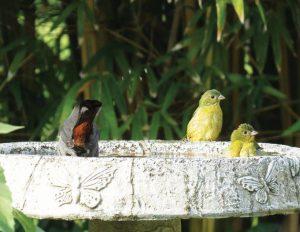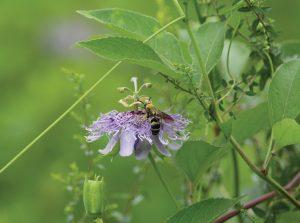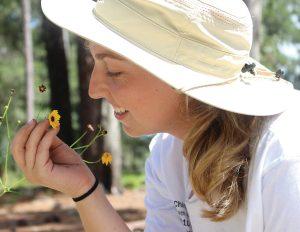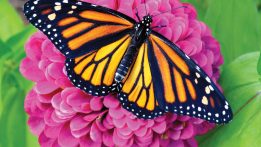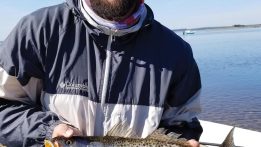Imagine your backyard as a place where butterflies are attracted by flowers, songbirds are gobbling up seeds and berries, and frogs, bats and lizards are eating mosquitoes and other insects. Your efforts to create wildlife habitats at home will have a positive impact because animals need places to live beyond our public lands. They also provide a great opportunity for you, your family and your friends to enjoy watching wildlife. The FWC has introduced Backyards and Beyond, a campaign challenging Floridians to make a difference and have fun by creating a refuge for wildlife in their own backyards.
Here are five easy ways for you to become involved in Backyards and Beyond now:
- Turn your yard into a diverse wildlife habitat by adding native plants. A variety of native trees, shrubs and plants will provide natural food and cover for wildlife. A flowering native plant or shrub, for example, can provide nectar and pollen for butterflies and other beneficial insects, which in turn may be a meal for birds, lizards and frogs.
- Attract native wildlife to your yard by providing the four basics: food, water, shelter and enough space for raising young. By doing so, we increase the number and variety of species that visit our yards, improving our chances to observe them more closely.
- Document wildlife activity in your backyard. Submit photos via iNaturalist.org to Florida Nature Trackers projects, and even create a species list for your own backyard.
- Create a butterfly garden, build a nest box for birds or add a brush pile for small animals like earthworms, birds, toads and lizards in your backyard. For more information, check out the Planting a Refuge for Wildlife guide created by the FWC and Fish & Wildlife Foundation of Florida.
- Go beyond your backyard. Invite family and friends to explore Florida’s outdoors at wildlife management areas, local and state parks, state and national forests, and national wildlife refuges. Use iNaturalist to document what you see and join a project on Florida Nature Trackers.
Fun fact: Nearly 15 million observations by over 1 million people of more than 190,000 species of plants and animals throughout the world have been submitted to iNaturalist.
Remember, wild animals do not need supplemental feeding, such as bread crumbs and corn, from people. Naturally occurring insects and native plants with nectar, flowers, edible fruits, nuts and seeds provide nourishment for most butterflies, birds and small animals. Pet food, corn and other supplemental feed can encourage unwanted visitors, such as bears and coyotes.
Need help getting started? Explore the Backyards and Beyond website, MyFWC.com/Backyard, for more information on how you can get involved.
What if you live in an apartment, townhouse, or condominium and don’t have a backyard? You can still participate. Plant native flowers in containers on your front steps, on a balcony or in a window box. Work with neighbors to add native plant life to shared spaces like playgrounds, parks and other open areas in your development or community. Get children involved by bringing Backyards and Beyond to groups at school, a church or community youth group, or your homeowners association. No matter where you live, you can make a difference!
Here in Tallahassee and Leon County, you also can look forward to the April 26-29 City Nature Challenge. This is part of an international effort that encourages you to see, record and share the wildlife in your backyard and city. It will include activities and events all over town with Tallahassee on the long list of cities all over the world competing in the 2019 City Nature Challenge! ![]()
Diane Hirth
Habitat and Species Conservation Division of the Florida Fish and Wildlife Conservation Commission


